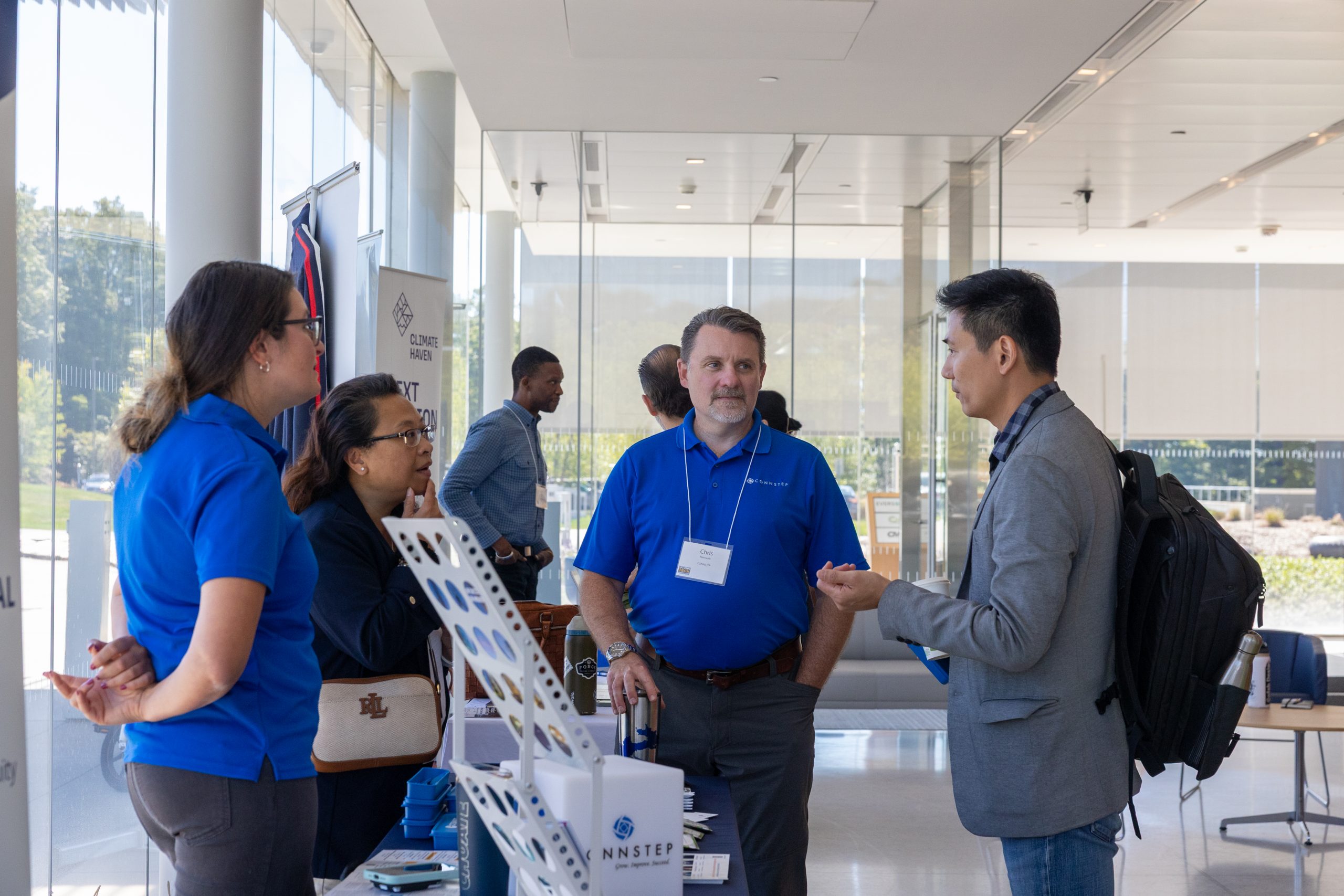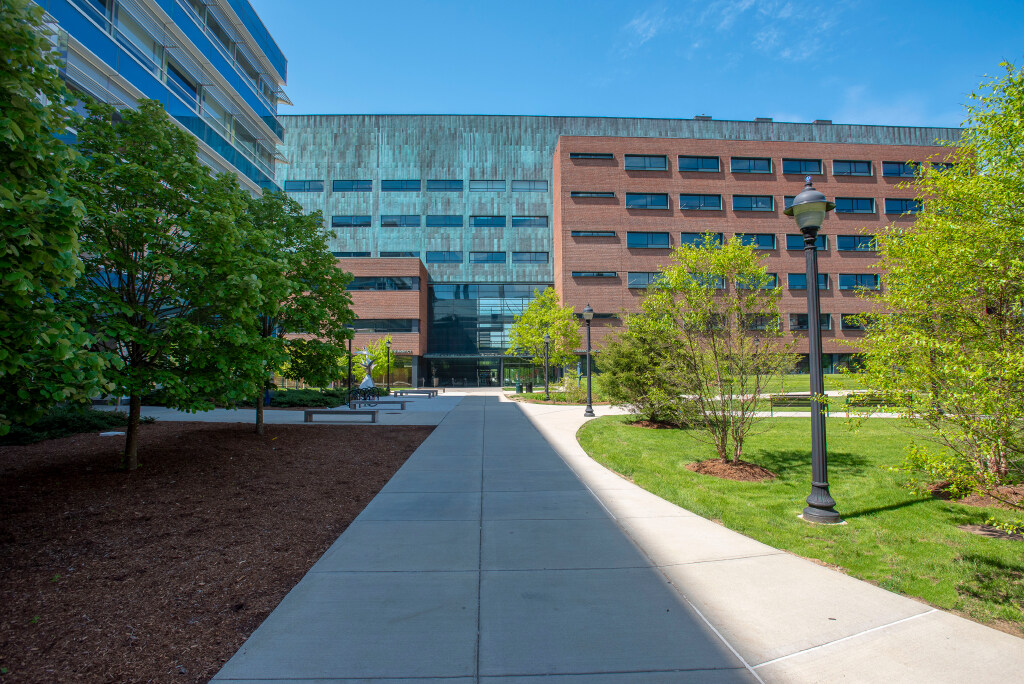Sound Waves Go Flat
A team of UConn College of Engineering (CoE) researchers have achieved a major milestone in the field of Phononics with the first experimental demonstration of an all-flat phononic band structure (AFB). Phononics concerns the study of sound and heat control. A breakthrough, detailed in an article just published in Physical Review Letters, introduces a new class of materials capable of uniquely controlling sound and vibrations by trapping energy with unprecedented intensity, offering exciting possibilities for potential applications in acoustics, vibration insulation, energy harvesting, and beyond.
The work, led by Professor Osama Bilal, director of the Wave Engineering Laboratory for Extreme and Intelligent Matter (We-Xite), unlocks a new recipe for engineering materials with exotic behavior. In the experiments, the material serves a double function, Bilal explains, by being a perfect sound vacuum and wave amplifier at the same time.
“A flat band in a band structure is a very special type of frequency band where the group velocity remains zero across all wavenumbers,” Bilal explains. “In practical terms, this means that sound waves at these frequencies do not propagate or disperse, leading to energy localization near the source with extremely high intensity.

“Our methodology shows that we can design materials that can insulate waves at all possible frequencies and trap energy at extreme intensities, simultaneously,” says Bilal, co-author, along with doctoral student Mahmoud Samak, of the paper unveiling the novel materials. “Unlike other forms of wave localization, such as those occurring at engineered lattice defects or topological interfaces, the energy localization in flat bands is not confined to a specific point in the material, surface, or boundary. This unique feature could enable a range of novel applications, from advanced acoustic cloaking and sound rerouting to energy harvesting and vibration isolation.”
The team’s approach began with a simple toy model with masses and springs, which they used to identify the necessary conditions for achieving an all-flat phononic band structure. From there, the researchers employed a combination of analytical calculations, numerical simulations, and experimental measurements to demonstrate the feasibility of their design approach. The key innovation, Bilal stresses, lies in the use of free-floating disks with magnetic couplings, a platform he has been developing over the past few years which provides the necessary grounding stiffness and enables the creation of a fully flat-band structure for phonons.
Looking ahead, the team plans to further refine their design methodology and explore how these flat-band materials can be scaled up and integrated into real-world applications such as sound and vibration insulation, energy harvesting for sensors or medical devices, sound lensing, or acoustic cloaking.

As the study progresses, it is the team’s hope that additional advancements in phononic metamaterials will lead to even more exotic wave-control capabilities. This breakthrough also lays the groundwork for further exploration of flat bands in other types of wave domains, offering an exciting frontier for research in wave physics and engineering.
“Our study is the first to demonstrate that an all-flat band structure for phonons is not only theoretically possible, but can be experimentally realized,” Bilal concludes. “The implications of this work extend beyond a basic lab experiment; we are opening the door to new technologies in acoustics, energy harvesting, and potentially heat manipulation.”
Bilal is a member of the Institute of Materials Science. The PRL paper, which has just been released, is titled “Direct observation of all-flat bands phononic metamaterials.” Research was conducted with support and a grant from the Air Force Research Laboratory, Materials and Manufacturing Directorate (AFRL/RXMS).
Latest UConn Today
- Tech Showcase Celebrates UConn’s Economic, Innovative ImpactThe first-ever event connects Connecticut’s manufacturing roots with emerging technologies and industries
- Survey Asked Parents Whether They Consult with Doctor or Social Media Before Visiting ER'The hypothesis of the study was that younger parents would be more likely to use online health information and certain types of online health information as well'
- Rivers in the Sky, Arctic Warming, and What this Means for the Greenland Ice SheetCharacterizing weather extremes from the past to add context to future impacts
- The School of Pharmacy to Recognize Three Alumni at the Annual Alumni AwardsThree alumni of the School will be honored in October at the Annual Alumni Reception on October 18th. These individuals have been recognized for their outstanding contributions through three awards: the Exceptional Service Award, the Distinguished Alumni Award, and the Tradition of Excellence Award.
- New Plant and Soil Health Center Named in Honor of Alum George Leigh MinorGeorge Leigh Minor ’56 (CAHNR) passed away at the age of 90 in January 2025, leaving a generous donation, which will be used to fund the renovations necessary to open the George Leigh Minor Plant and Soil Health Center.
- UConn and Yale-led QuantumCT a Finalist for Transformative NSF AwardThe National Science Foundation has announced Connecticut’s initiative as one of the few finalists for the Engines Program.













